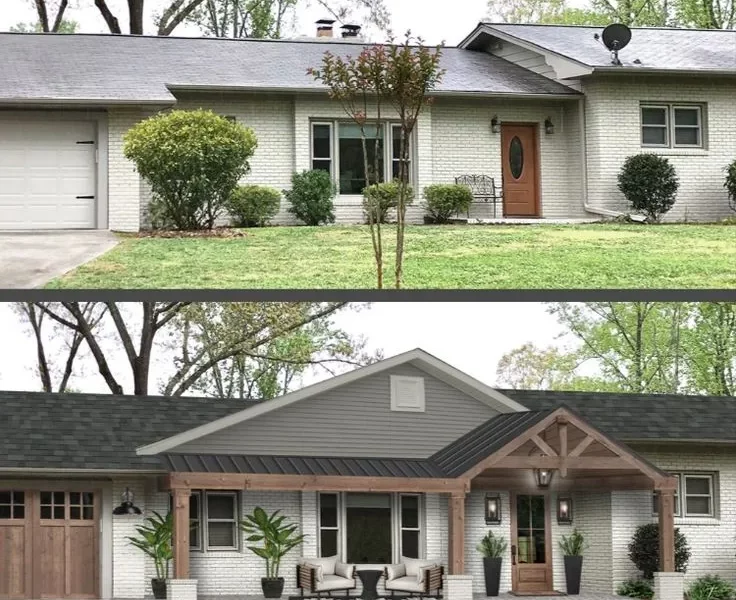In today’s economic climate, particularly in Louisville, where utility costs are 5% higher than the Kentucky average, smart homeowners must seek ways to cut expenses. A cost-efficient home isn’t just a budget-friendly choice; it’s a necessity. Moreover, such upgrades also increase the value of your home. The key lies in strategic remodeling – investing in the right areas of your home can yield significant long-term savings.
While these upgrades might have a significant initial cost, the reduction in ongoing expenses can be substantial. So, for all homeowners looking to reduce bills and save money, here are ten ways to transform your home into one that cuts costs.
1 – Energy-Efficient Lighting:
The simplest yet most effective way to start saving is by switching to energy-efficient lighting. LED bulbs, for instance, use at least 75% less energy and last 25 times longer than traditional incandescent bulbs. This change reduces your electricity bills and minimizes the frequency of replacements. This switch is a no-brainer for a home in Louisville, where energy costs are a concern. It’s a small step with a big impact.
2 – Window Replacement:
Old, drafty windows are notorious energy wasters, especially in a city like Louisville, where summers are extremely hot and the winters are wet and cold. You can significantly reduce heating and cooling costs by replacing them with energy-efficient windows. These windows are designed to keep heat in during winter and out during summer, reducing the need for excessive heating or air conditioning. While costly upfront, this upgrade can offer substantial savings in the long run, making it a wise investment for Louisville homeowners.
However, contact a credible local company and get a Louisville window replacement cost estimate to understand how much you need to invest in this essential upgrade.
3 – Insulation Upgrades: Seal in the Savings
Insulation is the unsung hero of energy efficiency. Proper insulation in your walls and attic can dramatically affect your home’s temperature regulation. Maintaining a consistent internal temperature means your heating and cooling systems don’t have to work overtime, leading to lower energy bills. In cities where temperatures vary, upgrading your insulation is crucial for a more energy-efficient home.
4 – Water-Conserving Fixtures: Drip Savings, Not Water
Water conservation is another key area where homeowners can save. Installing low-flow toilets, showerheads, and faucets can significantly reduce your water usage and, consequently, your water bills. These fixtures are designed to provide the same functionality while using less water, making them an eco-friendly and cost-effective choice for any modern home.
5 – Programmable Thermostats: Smart Control, Smarter Spending
A programmable thermostat is a smart investment for efficiently controlling your home’s heating and cooling systems. By setting your thermostat to adjust the temperature during different times of the day, you can ensure that you’re using energy effectively when you’re away. This is particularly beneficial in cities, where varying temperatures can lead to fluctuating utility bills.
6 – Solar Panels: Harnessing the Sun’s Power
Incorporating solar panels is a transformative step for any home. This renewable energy source significantly reduces reliance on traditional power grids, lowering electricity bills. In sunny locales, solar panels can generate excess power, which might be sold back to the grid in some areas. Although the initial setup cost is considerable, the long-term savings and potential tax incentives make solar panels an increasingly popular choice for energy-conscious homeowners.
7 – Energy-Efficient Appliances: Modernize for Efficiency
Upgrading to energy-efficient appliances is another effective way to reduce household energy consumption. Modern refrigerators, washing machines, dishwashers, and other appliances come with energy-saving features that lower electricity usage and decrease water consumption. Bearing the Energy Star label, these appliances may have a higher purchase price. Still, they compensate with their operational cost savings over time, making them a financially savvy choice in the long run.
8 – Selecting The Right Roofing Materials:
The right roofing material can significantly affect a home’s energy efficiency. Materials like cool roofing, which reflect more sunlight and absorb less heat, can significantly reduce the need for air conditioning, leading to lower cooling costs. Additionally, such roofing materials often have a longer lifespan, reducing the frequency and cost of replacements. While this upgrade might be costly, the benefits of energy savings and increased property value are compelling reasons to consider this option.
9 – Landscaping for Energy Savings: Nature’s Insulation
Strategically planned landscaping is an often overlooked aspect of home energy efficiency. Planting trees and shrubs in certain areas can provide natural insulation and shade, helping to regulate indoor temperatures and reduce reliance on heating and cooling systems. For example, deciduous trees planted on the south and west sides of a home can block the summer sun while allowing winter sunlight to warm the house. This natural method of temperature regulation can significantly cut energy costs and enhance the property’s aesthetic appeal.
10 – Smart Home Systems: Smart Savings
Smart home technology represents the cutting edge of home energy efficiency. Systems like smart thermostats, energy monitors, and automated lighting can be controlled remotely, offering homeowners unprecedented control over their energy usage. These technologies provide:
- Real-time data and analytics.
- Enabling users to identify and rectify inefficiencies.
- Leading to substantial savings.
While the cost of these systems varies, the potential for long-term energy savings makes them a worthwhile investment for the modern homeowner.
Conclusion:
Remodeling your home for efficiency is more than just a trend; it’s a smart financial strategy, especially in areas like Louisville, with higher utility costs and extreme temperatures. Although each option involves an upfront investment, their long-term financial and ecological benefits make them invaluable for contemporary homeowners. As we move towards a more sustainable future, these home improvements represent a wise financial decision and a commitment to a healthier planet. Embracing these changes can lead to a home that’s not only more comfortable and cost-effective but also environmentally responsible.







